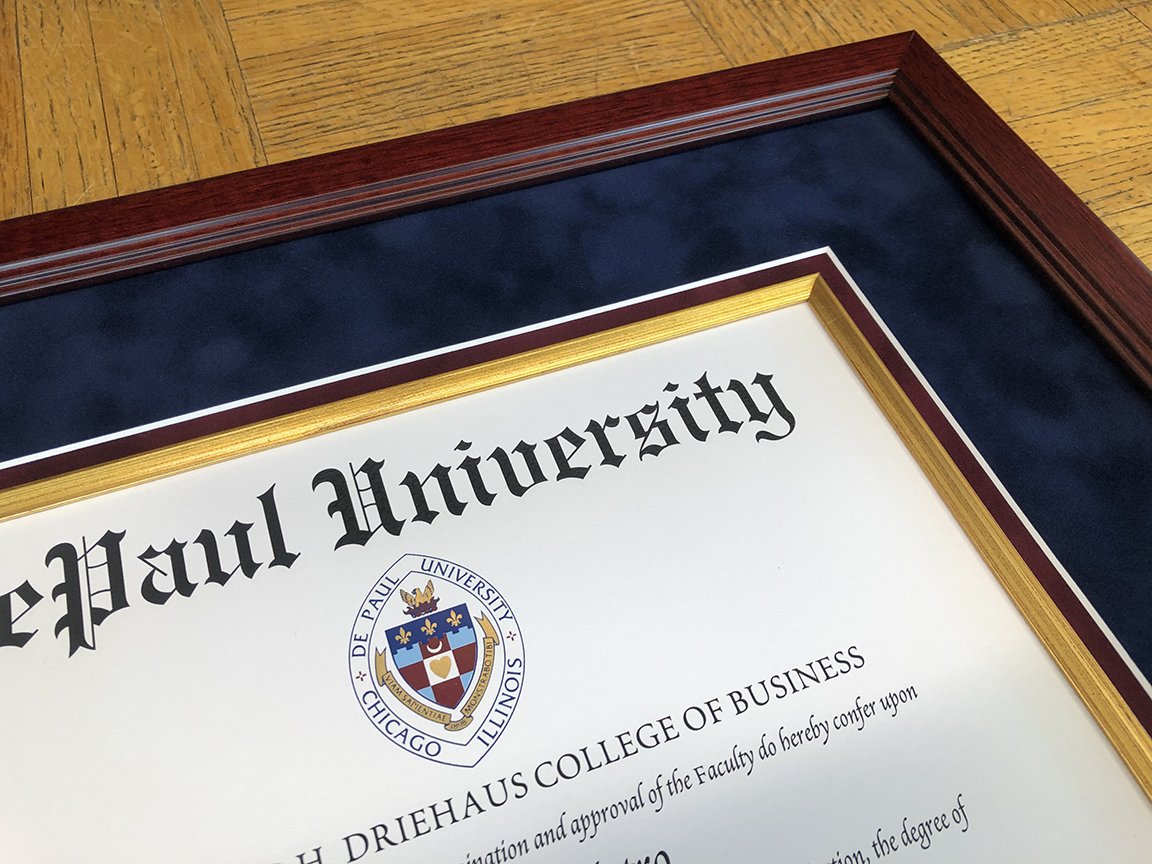Graduation Day… one of the greatest milestones anyone can achieve. Whether it’s from grade school, high school, college or any other class – that diploma or certificate is a sense of accomplishment that should be preserved.
That’s why framing a diploma correctly should be a decision left to the guidance and expertise of a professional picture framer. A goal you’ve worked so hard to achieve deserves to be showcased in a protected and fitting presentation.
When you bring in your diploma, we tend to begin with mat selection first. We always use acid free matting and hinges to preserve the integrity of your diploma as the single sheet of paper or vellum that was handed to you. Let us know if you plan to continue your studies in pursuit of additional degrees because that may play into how we frame your first so that they will look unified on the wall. We often recommend using a black suede over a school color each if you pan to group them.
We may look for a school color as a top mat that is not so vibrant as to take away from the diploma itself. You may also choose a suede or linen mat in the same school color to add a richer textured look that a diploma deserves.
You then can add the more vibrant school color as a second mat, typically showing 1/4” to 3/8” and may add the third school color showing 1/8” to 1/4” that will border the paper color of the diploma to coordinate the desired finished matted look.
One can also add a V-groove in the top mat showing the core of the mat, usually white, or add a fillet inside the bottom mat opening.
Adding a V-groove to the top mat is a great way to make the presentation of a diploma or certificate look even more custom and prestigious.
When we framed the DePaul college diploma (above), we chose the DePaul blue as the top mat, in a suede texture. The second mat used is also a burgundy suede and then we added a gold fillet to go up against the diploma. We then choose a mahogany color frame to repeat the color of the middle mat which then pulls your eye toward the certificate.
Adding spacers between the top mat and middle mat is a great way to add dramatic depth and visual appeal to a piece.
Some customers will prefer their matting to match the colors in their diploma such as shown in the above photo. While others may want to consider more traditional colors which you may want to educate them on so they can make a more knowledgeable decision.
During the Industrial Revolution (Late 1800’s) specific colors were assigned to signify certain areas of study leading to specific professions and or careers. These colors were only standardized in the United States and Canada. European institutions have always had diversity in the academic dress.
North American institutions employ a definite system of dress thanks to Gardner Cotrell Leonard from Albany, New York. After designing gowns for his 1887 class at Williams College, he took an interest in the subject and published an article on academic dress in 1893. Soon after he was asked to work with an Intercollegiate Commission to form a system of academic apparel. The system Gardner Cotrell Leonard helped form was based on gown cut, style and fabric; as well as designated colors to represent field of study.




